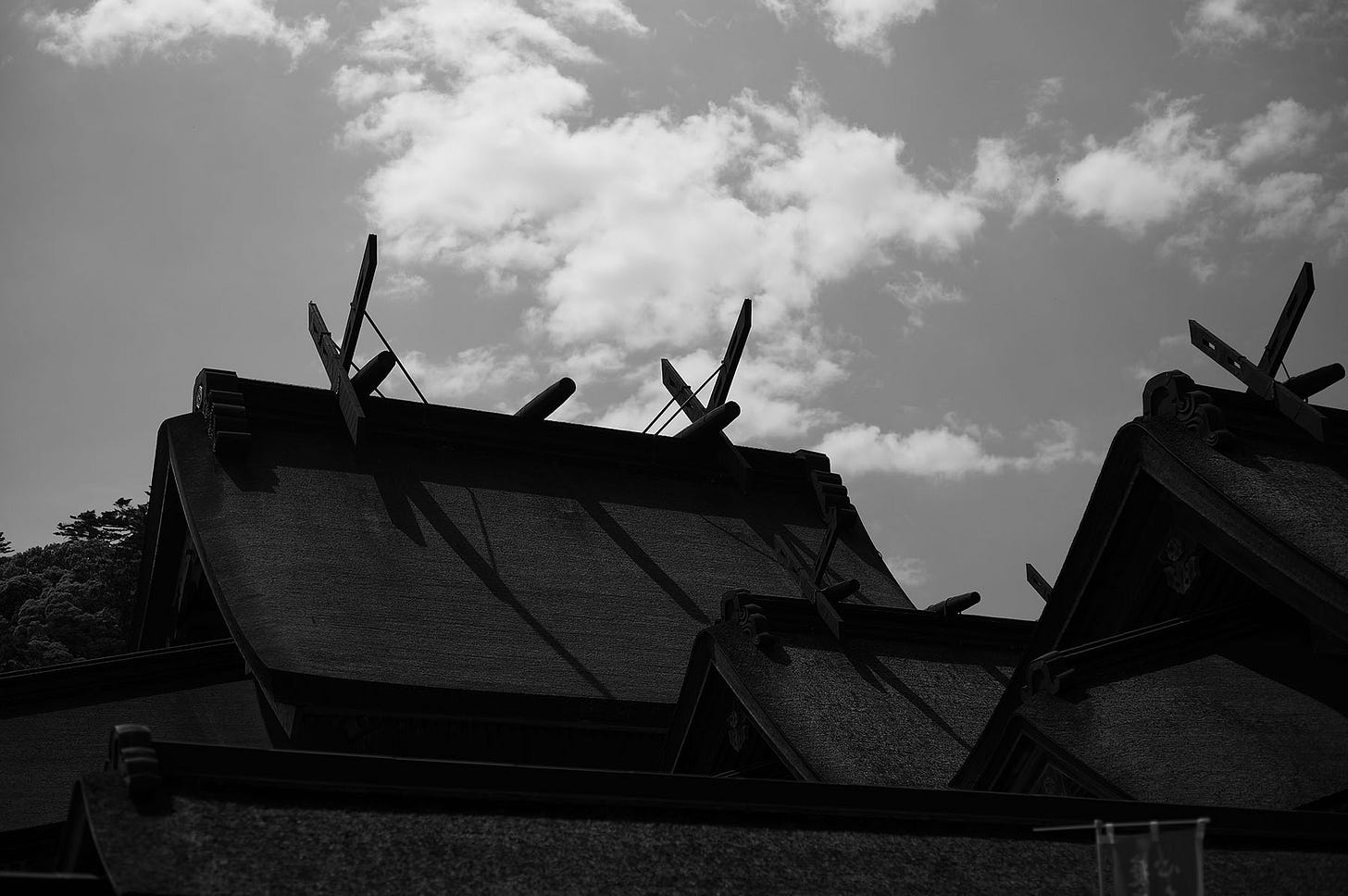Japan’s Shrine System and Its Shift Toward State Shinto
Local Traditions Erased as Shinto Became a Tool of State Power
Japanese religion is regarded worldwide as something mysterious, and among the aspects that most baffle foreign travelers is Shinto. In particular, those accustomed to Western religious concepts often find Shinto quite perplexing, but in reality, this confusion applies equally to the majority of Japanese people.
Even if someone tells us “Shinto is a religion,” there’s a lingering sense of not quite agreeing. Moreover, in the end, there are almost no remaining means to know how Shinto began or how it reached its current form.
Nevertheless, this series will explore various insights that can deepen our understanding of Shinto.
First, how many Shinto shrines are currently in Japan? According to a report by the Agency for Cultural Affairs published in 2023, there are 80,608 shrines nationwide. This data is current as of 2022, but in 2010, the total number of shrines was 86,640. In other words, in the span of just about ten years, roughly 6,000 shrines have been closed or abandoned.
This fact reflects one side of Japan’s entry into an unprecedented era of super-aging demographics, yet the decline of Shinto itself traces back to the dawn of modern times. Let us begin by looking at the broad historical flow of the shrine system.
The oldest record of the imperial court managing shrines and compiling statistics is found in the Engishiki (延喜式), a legal code compiled in the year 927. It records 2,861 shrines.
Shrines listed in the Engishiki are known as “shikinaisha” (式内社, literally “shrines within the code,” i.e., shrines recognized by the imperial court). However, at that time, Japan was not unified, so there were countless shrines not included in the official records, referred to as “shikigesha” (式外社, literally “shrines outside the code”).
These “shikinaisha” were then classified into four ranks. Essentially, a shrine’s rank was related to its political relationship to the imperial court:
・Kanpeitaisha (官幣大社): 198 shrines
**These were top-ranking shrines that had a direct link to the Imperial Court, which provided ritual offerings and support.
・Kokuheitaisha (国幣大社): 155 shrines
**Similar to Kanpeitaisha in their high status, but they received their official support and offerings from provincial authorities rather than directly from the Imperial Court.
・Kanpeishōsha (官幣小社): 375 shrines
**Smaller-scale shrines still recognized by the Imperial Court, though not as prominent as the great shrines.
・Kokuheishōsha (国幣小社): 2,133 shrines
**Smaller shrines that were supported by local (provincial) authorities.
In this way, shrines were given an official status by the imperial court for the first time, and the system became institutionalized. This is called the “ancient shrine ranking system” (古代社格制度). From then on, worship tended to focus on those high-ranking shrines documented in the Engishiki.
Although the exact date is unclear, by the early 11th century, a different ranking system emerged—known as the “medieval shrine ranking system” (中世社格制度). Here is how it changed:
・Ichinomiya (一宮)
**The shrine recognized as the highest-ranked within a certain region.
・Sōsha (総社)
**A shrine that enshrines (brings together) the deities of a particular province in one place.
・Kokushi-hōheisha (国司奉幣社)
**A shrine within a given province that is listed in the Engishiki mentioned above.
・Nijūnisha (二十二社)
**Special shrines that received ritual offerings (hōhei) from the imperial court.
This development is related to the arrival of the medieval period, in which the ritsuryō system (律令制度)—an administrative system used by the imperial court and noble classes to govern the entire country directly—was well established and distinctions between various provinces became clearer.
In accordance with these established provinces, the imperial court appointed officials called “kokushi” (国司), and these officials were required to visit the local ichinomiya shrine upon assuming their post.
Remnants of this ichinomiya system can still be found today in many places across Japan. For example, in Kyoto, they are the Kamigamo Shrine (上賀茂神社) and Shimogamo Shrine (下鴨神社); in Nara, it is Ōmiwa Shrine (大神神社); in Osaka, it is Sumiyoshi Taisha (住吉大社), and so on.
Thus, if you are traveling in Japan, it is recommended to pay respects at the local ichinomiya first before touring the area.
The medieval shrine ranking system persisted until the early modern period. A major shift occurred with the Meiji Restoration in 1868. The newly formed modern government once again consulted the Engishiki and revised the shrine system.
One may wonder why the government felt it necessary to alter a system that had endured for so long. The reason lies in the hereditary nature of shrine management at the time.
Historically, Shinto shrines were maintained by specific clans in each area, who passed down shrine-related duties from generation to generation. However, the Meiji government officials, who considered themselves progressive, deemed such hereditary customs “archaic” and sought to dismantle them.
As a result, in 1871, the government abolished hereditary succession among Shinto priests and instituted the principle that the state would select and appoint them. Even so, there remain a few exceptions where hereditary succession was not abolished and continues to this day—examples include Izumo Taisha (出雲大社) in Shimane Prefecture and Kono Shrine (籠神社) in the northern part of Kyoto Prefecture.
Another significant factor was that the Meiji government had to construct a modern nation on par with the Western powers as quickly as possible. They therefore declared that “Shrines exist to serve the state,” and proceeded to eliminate and unify the diverse local shrines (and associated folk beliefs). For them, this centralization was indispensable to forming a unified nation-state.
At that time, a decisive event occurred. If shrines were now proclaimed as serving the state, then a system that matched this new role needed to be established. Accordingly, the officials revised the old shrine ranking system and—in a bold move—placed Ise Jingū (伊勢神宮) at the pinnacle of the new system.



